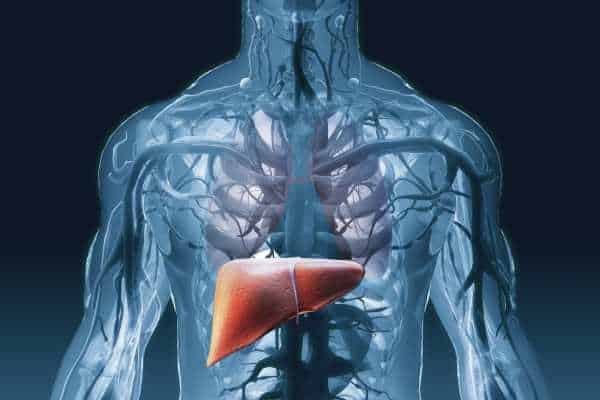(£)
GBP (Default)
- ($) USD
- (€) EUR
- ($) AUD
- ($) CAD
- ($) NZD
15% off first order with code: 1storder
99%+ Quality Guaranteed
Pay by crypto get 10% discount
Shipping Protection
Fast Order Process
15% off first order with code: 1storder

Many SARM users worry whether they are hepatotoxic or damage liver cells and the organ. Many pundits disagree on the solution because of contradicting reports.
If you’re a typical, healthy male between 18 and 65, certain SARMs may elevate your liver enzymes, but they won’t cause liver damage or undesirable signs or symptoms.
Your liver hormones will return to baseline when your cycle finishes; Post-Cycle Therapy Support can speed up this progress.
You can utilise SARMs without negative liver effects if you have no medical issues. However, you should continue to watch your liver enzymes or take a Cycle-Support Supplement.
The effects every user experiences may be different depending on their physiology.
Sarm Cycle Supplements are available to buy online from Pharma Lab Global .
Damaged livers emit ALT and AST into the bloodstream.
They help us evaluate how much your liver is hurting. ALT should always be 4:5 to LH.
Many people are unaware that alcohol can cause significant liver damage by raising ALT and AST levels.
Drugs cause liver damage in three ways:
Jaundice, in which your skin and eyes turn yellow, is a sign of liver poisoning. Loss of appetite and weariness are also signs, although jaundice is the most telling.
Some SARMs are considered to be liver-toxic. Let’s examine each one in more detail:
MK-2866 Ostarine – Ostarine is often thought as a beginner’s SARM, however, Ostarine can cause liver toxicity, especially at high doses. Many bodybuilders use ten times the recommended dose of Ostarine, so be careful. Since you don’t know how Ostarine will affect your liver, keep to the recommended dosage of 10mgs a day for the first cycle.
LGD-4033 Lingandrol – In trials 1mg of Ligandrol did not raise ALT or ALS. Eight-week cycles are common for bodybuilders. Since Ligandrol is effective at low doses, never take more than 5mg daily. This avoids post-cycle suppression, which has adverse effects, so keep to this dosage.
RAD-140 – In 99% of people, RAD 140 won’t cause liver damage, but take blood testing before and after your Testolone cycle to be sure. It will also help you identify if you require PCT based on your Testosterone levels.
S4 Andarine – There are no known examples of instances where taking Andarine raised liver enzyme levels, but always adhere to the recommended S4 dosage.
YK-11 – YK11 is an acid methyl ester and myostatin inhibitor. Its structural structure implies it contains many methylation groups; hence it may cause liver damage. Very little research has been conducted, so take small doses of YK-11 and get your bloodwork done. You may need Cycle-Support and a Post-Cycle Therapy supplement to support your liver.
S23 – Again there has been very little research coducted on S23. However, despite being the strongest SARM, it should be easier on the liver than YK-11 because it has fewer methylation groups.
MK 677 Ibutamoren is considered liver-safeas it is a Growth hormone secretagogue, not SARM.
GW-501516 Cardarine – PPAR-delta agonists typically protect the liver, but not Cardarine. Cardine can have an adverse effect on the liver, increasing liver fibrosis. This means that you probably shouldn’t take Cardarine without liver support including Cycle Support.
SR9009-Stenabolic – SR9009 lowered liver fibrosis in mice in a two-week study. Mice fed SR9009 for 7 weeks exhibited no rise in liver enzymes. This suggests that Stenabolic won’t cause liver damage.
In conclusion, if you are worried about Liver damage, MK-2866, YK11, and GW-501516 should be avoided. Or stick to low doses, use a Cycle-Support, and monitor your bloodwork. RAD-140, LGD-4033, S4, and S23 are ambiguous. When using on of these SARMs get a blood test and use Cycle-Support so you’re prepared should they have an effect.
MK 677 and SR9009 are considered to be liver-safe.
Supporting your Liver when using SARMs.
Using additional supplements when using SARMs is advised as they can provide nutrients that will support your liver function. For example both Pharma Lab Global Cycle Support and Post-Cycle Support both contain Milk Thistle. Silymarin, milk thistle’s primary component, enhances liver function. Milk thistle reduces liver inflammation in mice, yet many claim it heals liver damage.
[1] https://pubmed.ncbi.nlm.nih.gov/ 23698242/
[2] https://www.ncbi.nlm.nih.gov/ pmc/articles/PMC3177038/
[3] https://academic.oup.com/ biomedgerontology/article/68/1/ 87/548321?login=false
[4] https://pubmed.ncbi.nlm.nih.gov/ 27840152/
DISCLAIMER: All products sold by Pharma Lab Global are for in-vitro research and laboratory use only. These products are not designed for use or consumption by humans or animals. Nothing on this Website is intended to diagnose, heal, treat, cure, mitigate or prevent disease. By purchasing from our Website the buyer accepts and acknowledges the risks involved with consumption and handling of these products. All articles and product information provided on this Website are for informational and educational purposes only. All products are to be handled by qualified and properly trained research or laboratory professionals only.
TO PURCHASE PRODUCTS FROM OUR WEBSITE YOU MUST BE AT LEAST 21 YEARS OF AGE.
DISCLAIMER: All products sold by Pharma Lab Global are for in-vitro research and laboratory use only. These products are not designed for use or consumption by humans or animals. Nothing on this Website is intended to diagnose, heal, treat, cure, mitigate or prevent disease. By purchasing from our Website the buyer accepts and acknowledges the risks involved with consumption and handling of these products. All articles and product information provided on this Website are for informational and educational purposes only. All products are to be handled by qualified and properly trained research or laboratory professionals only.
